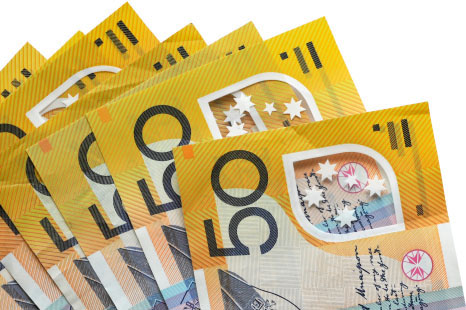WHILE we might softly applaud this week’s call by Richard Vines, a former director of the Victorian Labor Party’s fundraising arm, Progressive Business, for greater transparency in campaign donations, his proffered reforms are wholly inadequate. In this case, the United States – hardly a bastion of electoral innovation – has something to teach us about transparency in political finances.
Progressive Business was set up soon after the Bracks Labor government took office in late 1999. It was “the leading organisation linking business with government,” according to its website, and made no secret of the fact that its “extensive events program” provided “the ideal platform for business to meet and discuss those issues relevant to both groups.”
In practice, Progressive Business hosted functions attended by the premier and/or ministers and private citizens who had the resources to pay thousands of dollars for the privilege. Embarrassment followed when an indiscreet businessman, who had paid a premium admission of $10,000 to a function, told the media in November 2009 that he had spent the evening bending the ear of the premier about a coal industry deal he had an interest in.
Not surprisingly, Progressive Business and its counterparts in other states and other parties have attracted criticism for using public office (ministers of the crown) for the private gain of political parties by selectively selling access. A former NSW auditor-general went further, describing “selling time with ministers” as “insidious, obscene corruption.” Anti-corruption agencies, he argued, should act against the practice.
Richard Vines’s much more modest proposal involves an Australian Electoral Commission register of functions for which participants pay in excess of $1000, and a ban on parliamentarians directly accepting donations.
It is in this respect that we can learn from the United States. Their electoral machinery is certainly inferior to ours: there is no national electoral management body; the electoral boundaries are drawn up by whoever has the upper hand in each state legislature; and parties can use all kinds of obstructions to prevent people casting their vote. But in one vital sense, the American system has an edge over ours.
Continuous disclosure of donations meant that US voters had a quite good idea of who had given how much money to whom during the 2012 election campaign before election day. Campaign donations were recorded and made public almost in real time. This was despite the negative effects of the Supreme Court’s Citizens United decision, which mostly undid the McCain–Feingold regulation regime for donations and expenditure.
The contrast with Australia and the current federal election could hardly be greater. Here, voters will have to wait until early February 2015 – not February next year but February the year after – to find out the source of political donations to parties in the crucial period between 1 July and 7 September 2013.
Of course, thanks to changes made by the Howard government in 2006 and not amended by two Labor administrations, those disclosures will only occur if a donation exceeds $12,400 – or, if donors are alert enough to split their donation among the state, territory and federal divisions of their favourite party (which are treated as separate legal entities in each jurisdiction), only if it exceeds a total of $111,600.
Australia’s Dickensian system operates in this way. The political parties aren’t required to reveal donations for the previous financial year until the following October. The Australian Electoral Commission then has about four months to process the returns for publication. Because the 2013 election is being held in September and the relevant financial year will end on 30 June 2014, donations gathered between 1 July 2013 and 30 June 2014 will not be made public until February 2015. (Donations made before 1 July this year will be revealed in February 2014.)
Setting aside arguments about whether large and strategic donations can improperly buy political influence, surely it is not unreasonable to expect that voters should know as much as possible about candidates and parties – including who is funding them – before polling day? Imagine the outcry if parties were allowed to keep their policies confidential until after the election.
To deal with this problem Labor proposed twice-yearly reporting – a very small improvement on the current system – but even that was resisted by the Senate. It was revealed in May 2013 that Julia Gillard, still PM at the time, and opposition leader Tony Abbott had presided over a sleazy deal whereby the threshold for disclosure would be reduced from $12,400 to $5000 (rather than Labor’s original proposal of $1000) and the big parties would receive a windfall of additional public funding at taxpayers’ expense. This piece of cartel politics was rightfully derailed by an outburst of public condemnation.
It’s high time we got serious about political money reform. One technically simple method of continuous disclosure can be seen functioning in the United States and could easily be adapted to Australian conditions. Under the system used by the New York City Campaign Finance Board, candidates who sign up for the scheme must progressively report donations via the internet using a software package provided free of charge by the board. The submissions are then displayed on the board’s web page, almost in real time, for all to see.
The one flaw in the New York system is that, because of the first amendment to the constitution, parties and candidates cannot be forced into the scheme. But that is not an impediment in Australia. All that might prevent adoption of a similar system here is the lack of political will and lack of adequate funding to the Australian Electoral Commission.
Regrettably, despite Labor’s ambitious Electoral Reform Green Paper: Donations, Funding and Expenditure in December 2008, the federal campaign funding and disclosure regime remains opaque and open to real and perceived corruption. •




